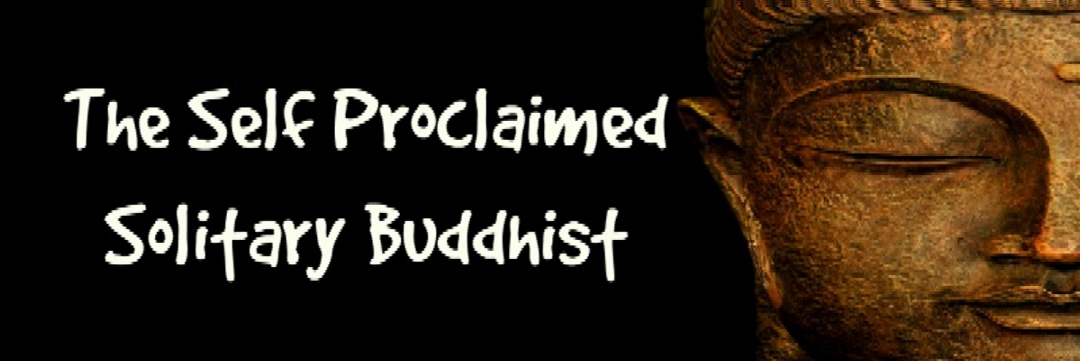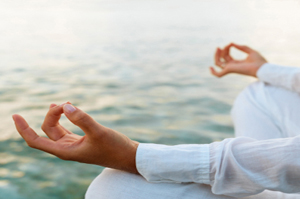5 Things That Hinder Buddhist Practice and The Antidotes....
In Buddhism, there are five things that hinder our practice and make us more prone to unskilful or unwholesome behaviour.These 5 hindrances are desire, aversion, sloth, restlessness and doubt
For each of these there are some simple antidotes that are suggested to counter their strength and effects.
Hindrance: Desire/Attraction
is the desire for anything that touches one of our six sense doors (sight, smell, touch, taste, feeling, thought). It usually involves desiring a pleasant experience. It may be food, sleep, a thought, sex, etc. Desire is one of the chief causes of suffering, and is an ever-pervasive hindrance in many people’s practice. It blocks mindfulness as we get carried away by our craving, and creates dukkha in our lives and practice.Antidotes:
As with all of the hindrances, the Buddha suggested that we know when it is present and know when it is not. We are also to know how it arises, how it ceases, and how to keep it from arising in the future. This goes for all of the hindrances, as the Buddha mentions in the Satipatthana Sutta.With sensual desire, there are a few other antidotes. First, we can guard the sense doors. This means we don’t go out chasing thoughts, sounds, feelings, etc. Let what comes to you come, but don’t reach out for other experiences. Second, we can do contemplations on death and the repulsiveness of the body. These are mindfulness practices that help us disenchant ourselves with the body, and also may be found in the Satipatthana Sutta.
Finally, practice concentration. Strange to think that concentration can serve as an antidote to something that impeded concentration, but it is true. Through practicing concentration, we focus the mind mind more clearly on one object and the mind doesn’t wander as much.
Hindrance: Aversion/ill-will
The second hindrance, ill-will, is also one of the chief causes of suffering in our lives. It’s a quality of aversiveness, or pushing experience away. Ill-will most often arises in response to unpleasant thoughts or sensations. When something arises that we find unpleasant, the mind responds by trying to distance it from us. This is a major cause of dukkha in our lives, and we should work to bring awareness to this process.Antidote:
Bringing awareness to it when it arises is really the most important tool we have. You don’t need to suddenly love the unpleasant experiences, but learn to watch for ill-will arising. It’s often such a quick reaction that we don’t even notice it happening. Continue to watch the process unfold.A great antidote to ill-will is metta or loving-kindness practice. In metta practice, we bring a gentle friendliness to our experience. It helps us with ill-will toward others, ourselves, events, thoughts, and anything toward which we apply it. Loving-kindness really is the most commonly used antidote to ill-will, but you may also reflect on the kamma being created by anger, hatred, etc. What does being angry do to you?
Hindrance: Sloth/Torpor/Dullness
The third hindrance is commonly translated as sloth and torpor. This comes in the form of a drowsiness or dullness in our practice. It may be the result of a lack of sleep, overeating, an uninterested mind, aversiveness, or many other causes. Sleepiness is something many meditators are faced with, especially on retreat. It may be one of the easier hindrances to notice in our practice, yet we struggle with it greatly. Sloth and torpor may be in the mind or in the body, giving the sense of a tired and lazy body or a dull mind.Antidotes:
The Buddha also gave a few suggestions for moments of sloth and torpor during practice: open your eyes, look toward the light, stand up, or tug on your earlobes. There are people standing during meditation at every retreat I’ve been on. It is a great way to keep the mind alert. The Buddha even recommended standing meditation as a form of practice in the Satipatthana Sutta. You may also switch to a walking meditation practice. Be aware of what leads to this hindrance. Overeating is a common cause of sleepiness, as is over or undersleeping. You may also try bringing some joy and energy into your practice. Many people find it helpful to switch to a mudita practice when experiencing this hindrance.Hindrance: Restlessness and Worry
The fourth hindrance is restlessness and worry. This is the quality of anxiety, monkey mind, or too much misplaced energy. We may feel the restlessness in the body, often in the chest or limbs. The mental part shows up often as a tense mind, a rapidly firing mind, or a mind preoccupied with the future. Restlessness and worry prevent the mind and body from settling, and often involves giving unwise attention to thoughts.Antidotes:
The antidotes offered in the suttas to this hindrance are quite varied. It’s suggested to spend time with who posses dignity, practice concentration, and develop tranquility. Equanimity practice is often helpful to develop this tranquil, concentrated state and no longer succumb to the thinking mind. You may also try walking meditation, this releases some of the extra energy in a skillful way.Hindrance: Doubt
The fifth hindrance is the hindrance of doubt. Doubt may come up in many different ways. We may doubt the teachings, if we’re practicing correctly, our teachers, or the experience we’re having. It may arise with a disguise that seduces us into believing our thoughts. When the mind is trying to figure out some aspect of our practice, doubt is often present. This is a dangerous hindrance because if unnoticed, it may pull us away from our practice completely.Antidotes:
The antidote to doubt is simply to notice it, as with the other hindrances. This breaks it down. We also may cultivate faith or conviction, reflecting on the benefits of practice in ourselves or others around us. Generally with doubt, the most effective thing we can do is just to bring awareness to its arising. When you are caught in thoughts of trying to figure something out or reason with yourself, check if doubt is present. Ask yourself – is it wholesome or unwholesome to be having this doubt? Confirm faith in your practice by having direct experiences that validate the benefits.This article is merely an overview of the five hindrances and some antidotes. As always I hope this benefits you in someway in your practice.



















